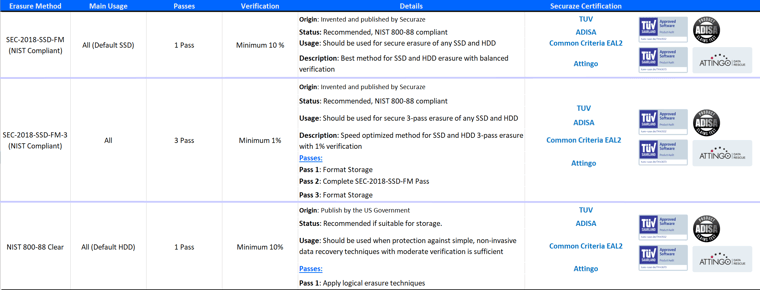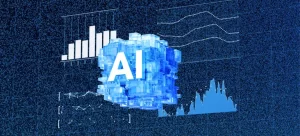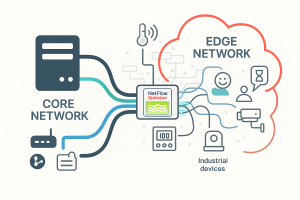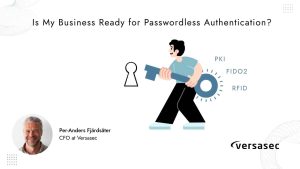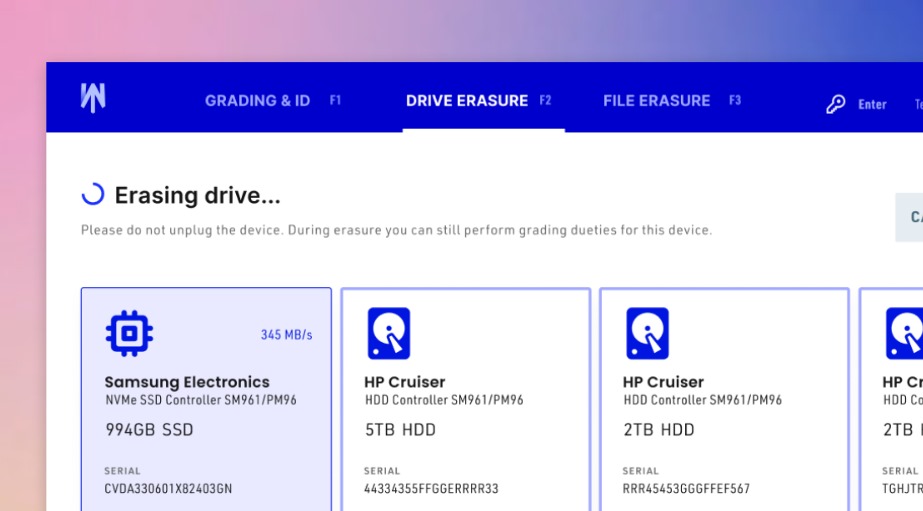
In the digital age, concerns about data management and privacy are rapidly growing as the volume of data increases exponentially. With regulatory compliance and data privacy issues becoming more prominent, it is the responsibility of the IT industry to ensure data security and prevent leaks by implementing proper data sanitization procedures and tools.
Data Sanitization
Data sanitization is the essential process of deliberately, permanently, and irreversibly removing or destroying data stored on a memory device to make it unrecoverable. A thoroughly sanitized device has no usable residual data. This article will discuss some correct and incorrect methods for sanitizing data.
Proper Data Sanitization Methods
To prevent the misuse of your organization’s data, it is crucial to sanitize data correctly. Below are some effective ways to sanitize your data:
- Physical Destruction – This involves physically shredding hard drives, smartphones, printers, laptops, and other storage devices using large mechanical shredders.
- Cryptographic Erasure – Also known as Crypto Erase, this method involves using encryption software to encrypt the entire storage drive and then erasing the decryption key. This method uses a minimum 128-bit encryption algorithm.
- Data Erasure – A software-based method that securely overwrites the data on the storage device with zeros and ones on all sectors of the device.
Improper Data Sanitization Methods
While not covered in detail here, the following methods are considered improper for data sanitization and pose a risk to your data. If your organization uses any of these methods, it is essential to address this immediately.
- Data Wiping – Often confused with data erasure, data wiping misses a crucial step: it does not verify that the space has been properly overwritten to ensure full data sanitization.
- Data Clearing – This method is good for protecting data from casual keyboard attacks and includes options like returning the device to a factory state. However, it does not meet the complete requirements for proper data sanitization.
- Data Deletion – Simply deleting the data does not fully protect it, as the data is not truly sanitized until it has been overwritten.
- File Shredding – Commonly confused with data erasure, file shredding involves overwriting the space with random ones and zeros but does not verify that the data has been sanitized.
- Factory Reset – Often used on mobile devices, this method does not effectively sanitize data.
- Reformatting – Similar to data deletion, reformatting does not provide adequate data sanitization.
Conclusion
Data sanitization is crucial for repurposing assets or recycling e-waste. Following proper data sanitization methods is essential to ensure the privacy and security of your devices. If you are unsure about the sanitization process or the potential exposure within your organization, we are here to help. Our team has extensive experience in data sanitization methods and will ensure your organization is protected from data leakage.
Securaze: Innovation. Integrity. Transparency.
About DT Asia
DT Asia began in 2007 with a clear mission to build the market entry for various pioneering IT security solutions from the US, Europe and Israel.
Today, DT Asia is a regional, value-added distributor of cybersecurity solutions providing cutting-edge technologies to key government organisations and top private sector clients including global banks and Fortune 500 companies. We have offices and partners around the Asia Pacific to better understand the markets and deliver localised solutions.
How we help
If you need to know more about Data Sanitization, you’re in the right place, we’re here to help! DTA is Securaze’s distributor, especially in Singapore and Asia, our technicians have deep experience on the product and relevant technologies you can always trust, we provide this product’s turnkey solutions, including consultation, deployment, and maintenance service.
Click here and here and here to know more: https://dtasiagroup.com/securaze/

